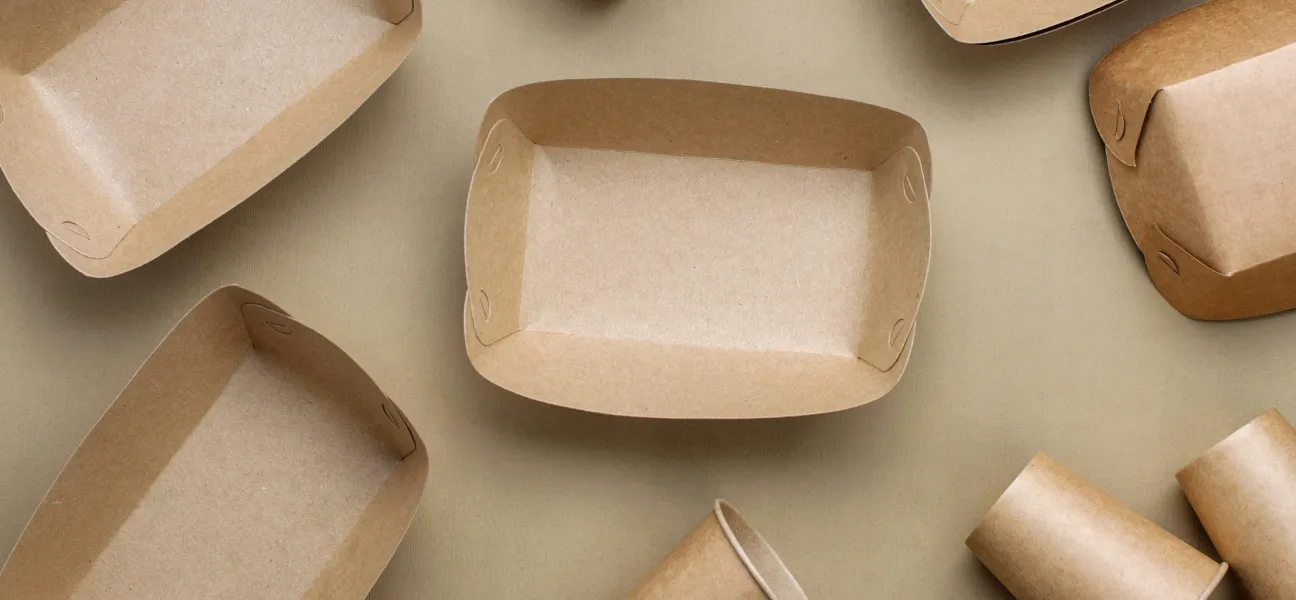
As sustainability becomes important in the food industry, many manufacturers and food brands are using eco-friendly food packaging to meet growing consumer needs. The demand for plant-based packaging and biodegradable materials is high.
For restaurants, retailers, and private label brands, sustainable packaging shows they care about the environment and attracts buyers who think about sustainability. However, the risks are often missed, especially with packaging that touches food.
Even though the goal is good, eco-friendly food packaging can bring real challenges like contamination, shelf life, barrier performance, and meeting regulations. Businesses in the B2B food industry, including those sourcing ingredients in bulk or packaged ingredients, must carefully consider these risks when choosing natural food packaging or zero waste packaging options.
Eco-friendly food packaging is packaging that aims to harm the environment less. It includes:
These materials are commonly used in eco-friendly food packaging for restaurants, store brands, and ingredient supply. However, even with their benefits for the environment, not all of them are suitable for direct contact with food, especially in factories or for products with a long shelf life.
Zero waste packaging is designed to reduce waste from the start. It uses reusable and compostable materials to help keep waste out of landfills. This method benefits the environment and attracts consumers who value eco-friendly options.
Natural food packaging uses materials such as bamboo and palm leaves. These materials are renewable, biodegradable, and often compostable. They provide a more sustainable option compared to traditional packaging.
A big concern with eco-friendly food packaging is chemical migration. This happens when materials from recycled or plant-based packaging contain leftover substances from inks, glues, or past uses. These can move into food, especially dry or fatty foods like nuts, cereals, oils, or protein powders.
For brands selling to other businesses (B2B), this is a serious issue. It can affect not only consumer health but also product quality and making sure to meet legislation. Some eco-friendly packaging materials have not been fully tested for long-term use, high-fat foods, or shipping conditions. This means they could harm the product without proper testing or protective layers.
A big issue with recyclable food packaging, especially paper and cardboard, is the risk of MOSH (Mineral Oil Saturated Hydrocarbons) and MOAH (Mineral Oil Aromatic Hydrocarbons). These oils can come from printing inks or can be picked up during recycling.
MOSH can build up in our bodies, and there are worries that MOAH might cause cancer. Groups in Europe, like EFSA and German authorities, have noted these substances as risks, especially if they can move into food.
Natural food packaging made from recycled materials should only touch food if it has special certified barriers to stop these substances from getting in.
Many eco-friendly packaging options for food do not protect as well as regular plastics. For example, a plastic pouch keeps out oxygen, moisture, and UV light much better than a biodegradable film or compostable tray.
When packaging doesn’t work well, food can spoil faster, absorb moisture, or oxidize. This is a bigger problem for bulk items or products that need to last a long time. Of course you want the biodegradable packaging to outlast the shelf life of the food it contains. If not, it can lead to more waste, quality issues, or even recalls.
Zero waste packaging must still do its job: to keep food safe and fresh. If it doesn't, it could end up costing more in waste than it saves in emissions.
The demand for sustainable packaging is growing around the world, but rules about new materials are not the same everywhere. In the EU, Regulation 1935/2004 covers materials that touch food, but many compostable or bio-based films do not have complete testing data. In the US, the FDA offers guidance, but not all eco-friendly food packaging manufacturers follow the rules for selling in different countries.
This lack of clear information creates problems for exporters and private label brands, especially those that sell in many markets. Without proper safety data, even good eco-friendly food packaging can lead to issues.
Many food companies find out too late that what's called "eco-friendly" doesn't always work well in real life. Biodegradable packaging can break down in very hot or very cold temperatures. Compostable containers might not work well with oils or moisture. Some plant-based packaging can get weak in dry areas or start to fall apart before the product is used.
These problems are even more serious when shipping large amounts, storing for a long time, or dealing with global supply chains. For manufacturers and co-packers, the cost of packaging that fails early can be much higher than the benefits of being eco-friendly.
To use eco-friendly food packaging safely and effectively, manufacturers and buyers should:
On Nutrada, you can find verified packaging suppliers and co-packers who focus on both sustainability and food safety. This helps your brand meet environmental goals and follow safety rules.
Many manufacturers provide different eco-friendly packaging options for various business needs. Working with these manufacturers can help you access the latest materials and technologies.
Here are some well-known eco-friendly food packaging manufacturers: